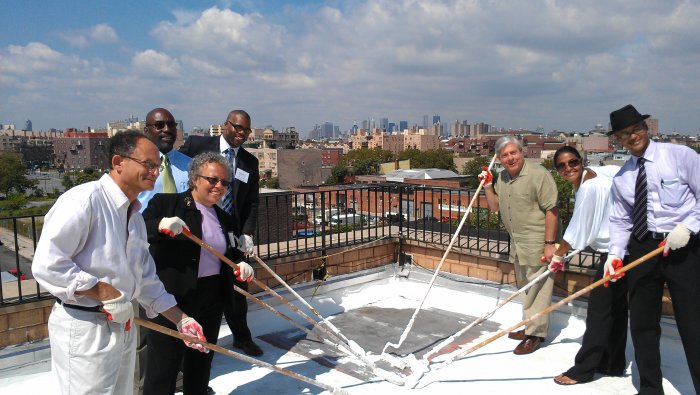
Pratt Center
Sustainability Seeds are planted in Brooklyn

On August 10, The Brooklyn Community Foundation (BCF) officially launched “Brooklyn Greens,” a three-year $750,000 commitment to help three low-income communities in Brooklyn to become models for environmentally responsible, sustainable living. Pratt Center for Community Development, the project’s coordinator on behalf of BCF, is working collaboratively with three long-established community development organizations – El Puente, Bedford Stuyvesant Restoration Corporation and Cypress Hills Local Development Corporation to create a “green roadmap” of replicable strategies and tools that can be used across all of Brooklyn’s and other inner-city neighborhoods.
Brooklyn Greens is supported through the Brooklyn Community Foundation’s Green Communities Fund that fosters the development of green spaces, jobs and neighborhoods in Brooklyn. “By promoting collective action and shared resources through this initiative, we ensure that the successful efforts of these three communities will benefit the entirety of Brooklyn, to make it a model of urban environmental improvement in years to come” said Marilyn Gelber, President of the Brooklyn Community Foundation.
“Brooklyn Greens will not only improve the quality of life for residents of these three neighborhoods, but create the tools and techniques for use in other neighborhoods while advancing the City’s goal to reduce carbon emissions” said Adam Friedman, the Director of the Pratt Center. Brooklyn Greens is one of the core strategies which, along with Pratt Center’s Sustainable Houses of Worship and other Sustainable Community Planning initiatives, can help communities develop and implement their own vision for a healthy green neighborhood.
The initiative was unveiled at a "CoolRoofs" event where, with the help of organizations like Community Environmental Center working under the NYC CoolRoofs program, community residents and volunteers paint their buildings’ roof white. This simple step greatly increases energy efficiency and cuts down on peak energy demand by reducing roof temperature by up 80 degrees Fahrenheit, lowering the interior temperature by up to 30% and saving up to 40% on electric bills.